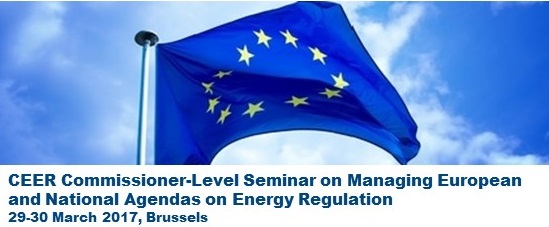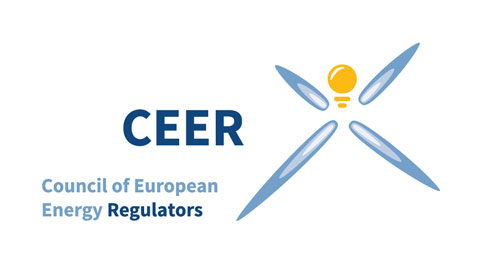March 2017

Editorial
 CEER’s commitment to helping consumers actively participate in, and benefit from, energy markets remains a top priority for regulators. New this month is our Handbook for regulators to assess (using defined metrics) how well their retail energy market is working (see the feature article below).
CEER’s commitment to helping consumers actively participate in, and benefit from, energy markets remains a top priority for regulators. New this month is our Handbook for regulators to assess (using defined metrics) how well their retail energy market is working (see the feature article below).
We also invite feedback by 12 May to our new public consultation on incentives schemes for Distributions System Operators (DSOs). This will input into guidelines we are developing to incentivise DSOs (most of whom are natural monopolies) to operate as efficiently as possible, thus benefiting the system and leading to lower network charges to energy consumers.
Watch out for our forthcoming:
- CEER report on the national support schemes in place across Europe to encourage the deployment of renewables.
- series of regulatory white papers (on issues such as upgrading consumer rights) in relation to the new Clean Energy legislative proposals.
CEER handbook for regulators to self-assess how well national retail energy markets are working
CEER has developed a Handbook as practical guidance for NRAs to evaluate the performance of their national retail energy markets.
CEER Framework to assess retail energy markets
CEER has long-since placed consumers centre stage of our own work, advocating strongly that energy markets must be consumer-centric. The CEER (2015) Position Paper on well-functioning retail markets introduced a framework for national regulatory authorities (NRAs) to evaluate the functioning of a retail energy market.
CEER considers the 2 over-riding principles for retail markets to be well functioning:
(1) competition and innovation, and
(2) consumer involvement.
The CEER framework further outlines 8 key-properties and proposes a set of 25 metrics for NRAs to self-assess the functioning of their national markets.
CEER Handbook for NRAs to self-assess energy retail market
CEER has now published a handbook that guides NRAs in how use to self-assess the functioning of their national retail energy markets. It is the result of extensive consultation (including 3 workshops) and pilot testing of the metrics (62 pilots undertaken by 12 NRAs),
The 2017 Handbook contains the 25 metrics introduced by the Position Paper, and is enriched by the pilot tests performed by NRAs. The pilots improved the definitions of the metrics – each now has six elements: description, purpose, source of data, quantification, unit of measure, and data completeness. It also contains advice on how to minimise the administrative burden when collecting data collection.
How regulators should use the Handbook
The Handbook explains to NRAs how to use each (of the 25) metric(s) in practice. It contains a step-by-step approach so that NRAs are able to adapt the metrics to their national contexts. CEER advises that the metrics should not be considered individually, but rather in conjunction with each other, while also taking into account the specificities of the country and the development of the retail market. The definition of a “relevant market” in this Handbook is derived from the competition law concept
What’s next?
CEER will provide training to NRAs on how to use the Handbook. The Handbook will be periodically reviewed and metrics updated. The 2017 Handbook is a first step in the process of preparing a draft roadmap for well-functioning retail markets.
CEER Public Consultations and Events
Visit our website for our future consultations and events.
CEER Publications
- CEER 2017 Handbook for National Energy Regulators - How to assess retail market functioning
- Evaluation of responses to the CEER consultation on a harmonised definitions of retail market metrics
Training for Regulators


